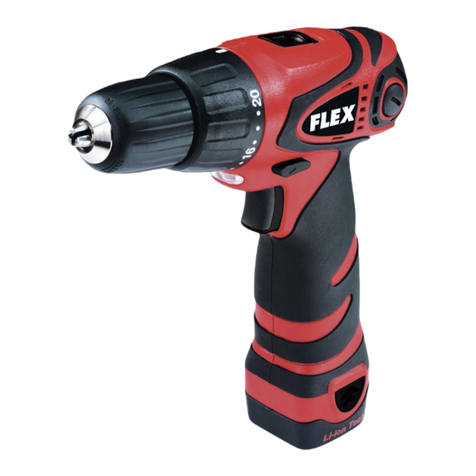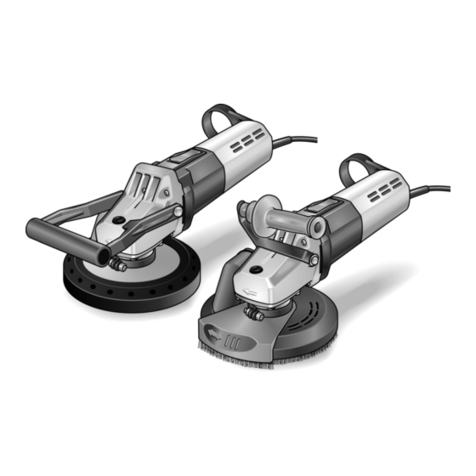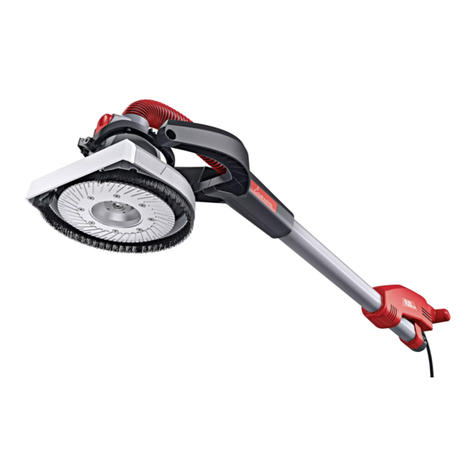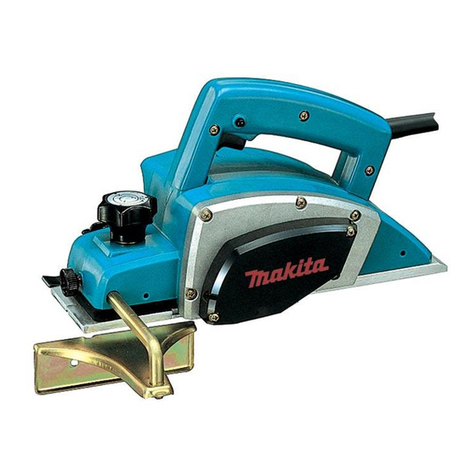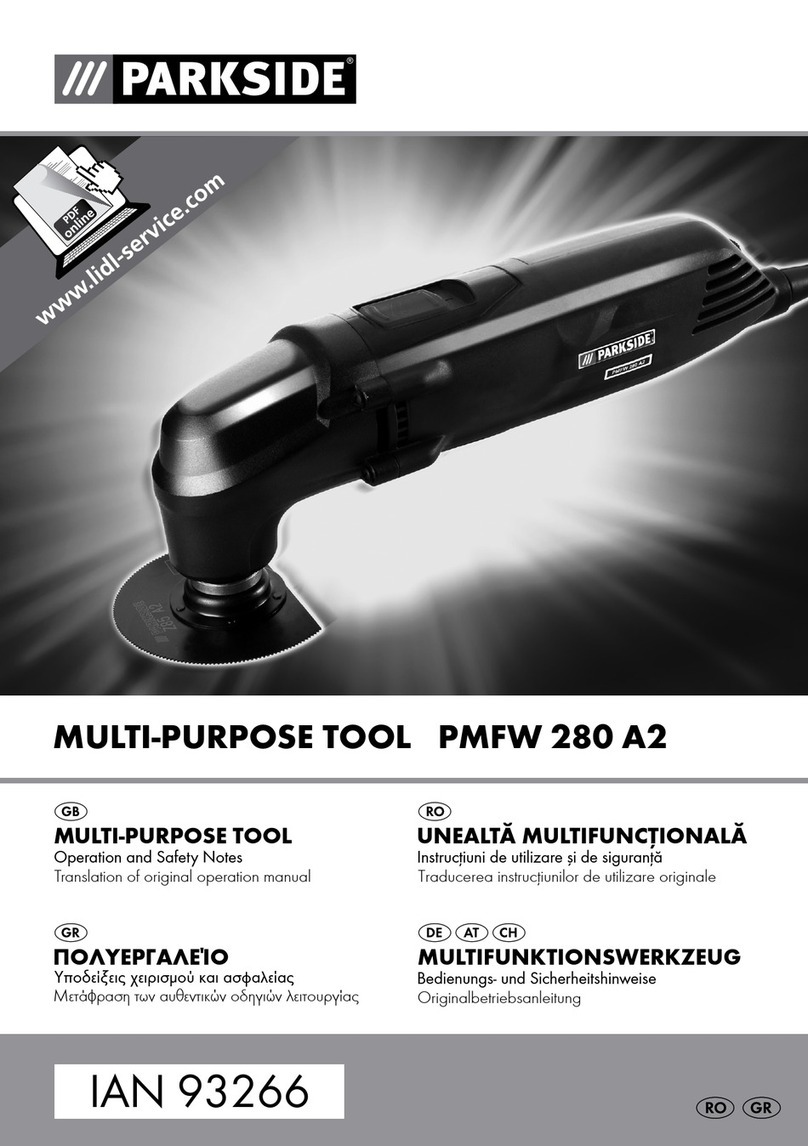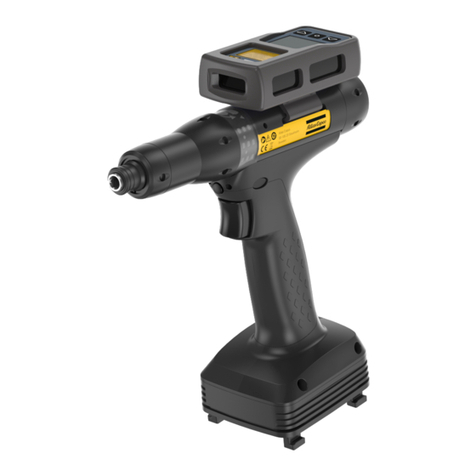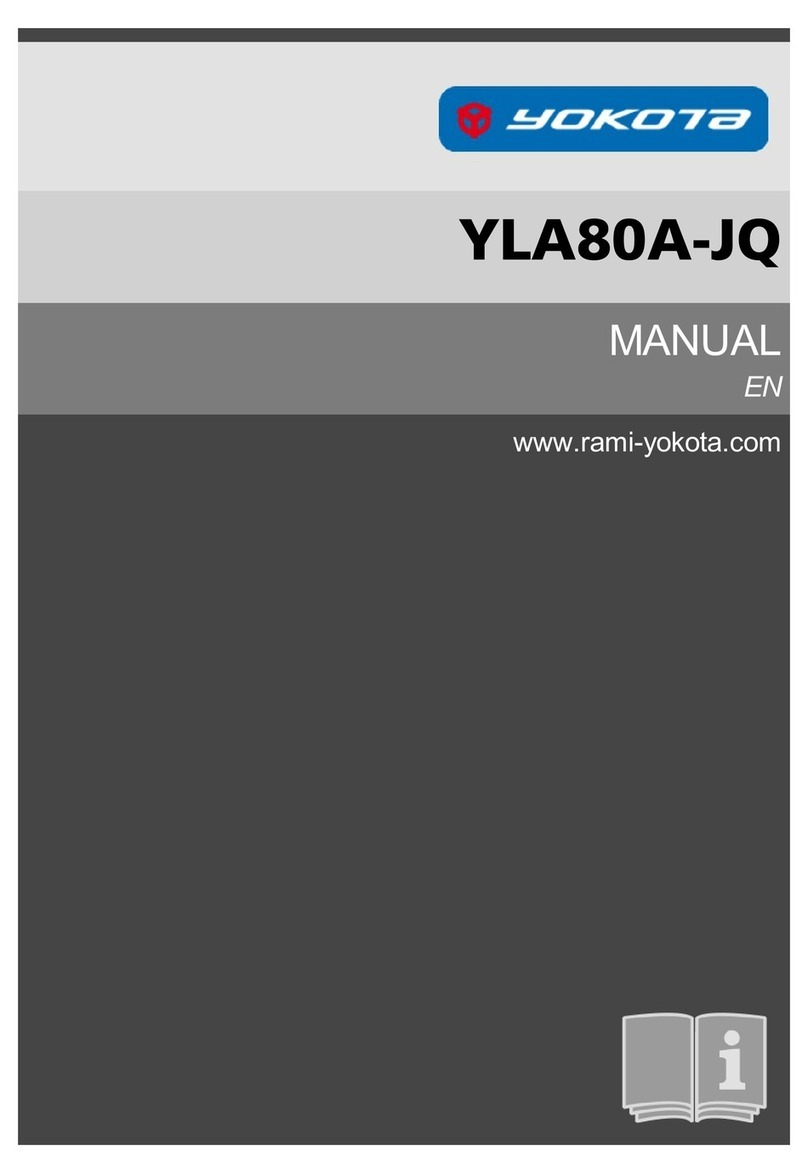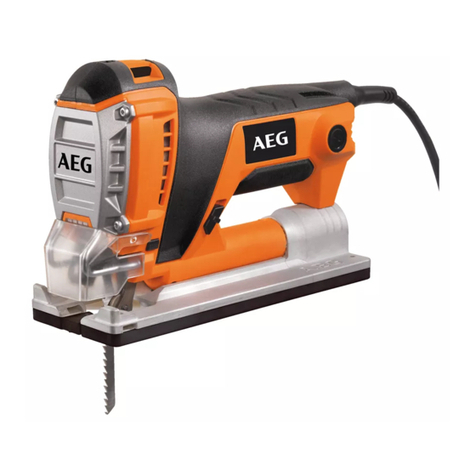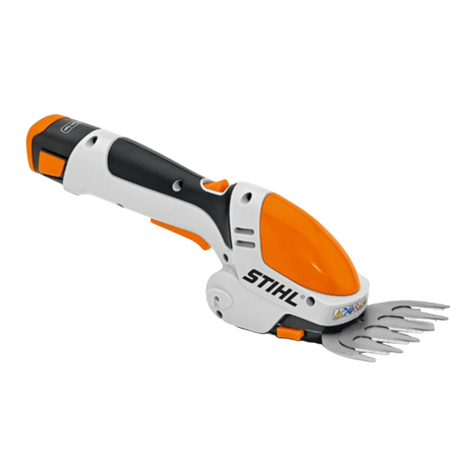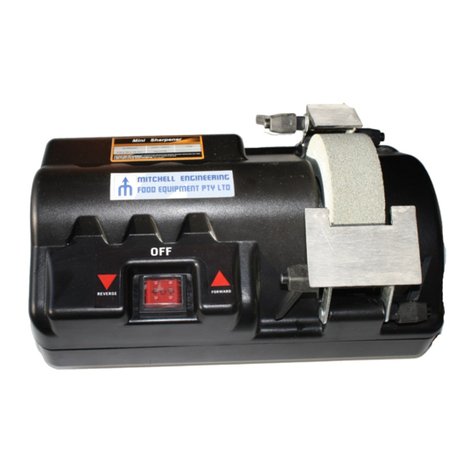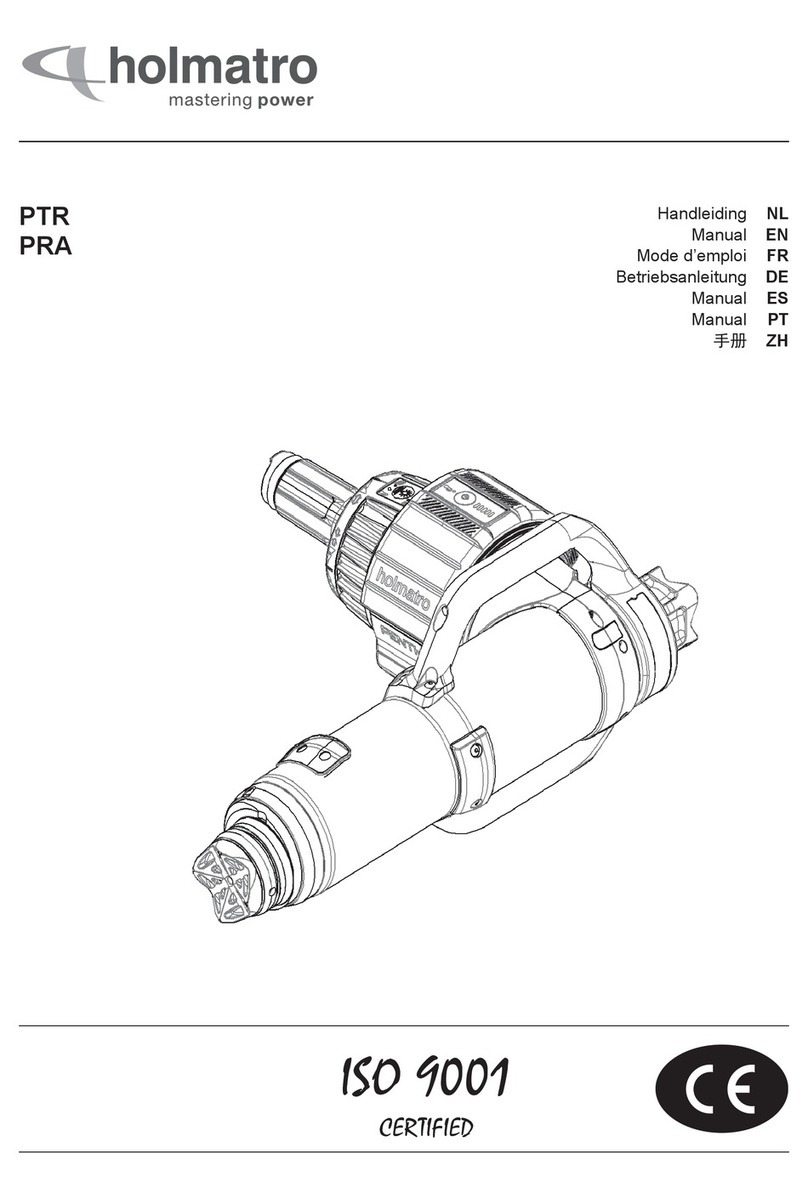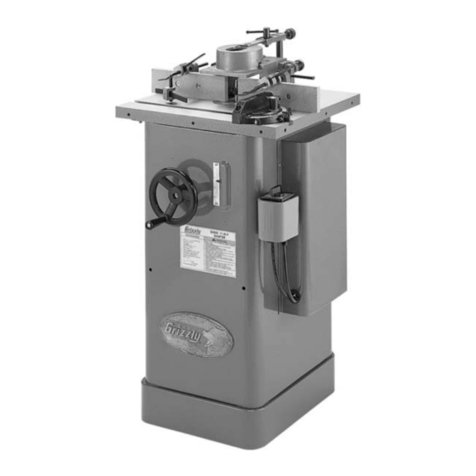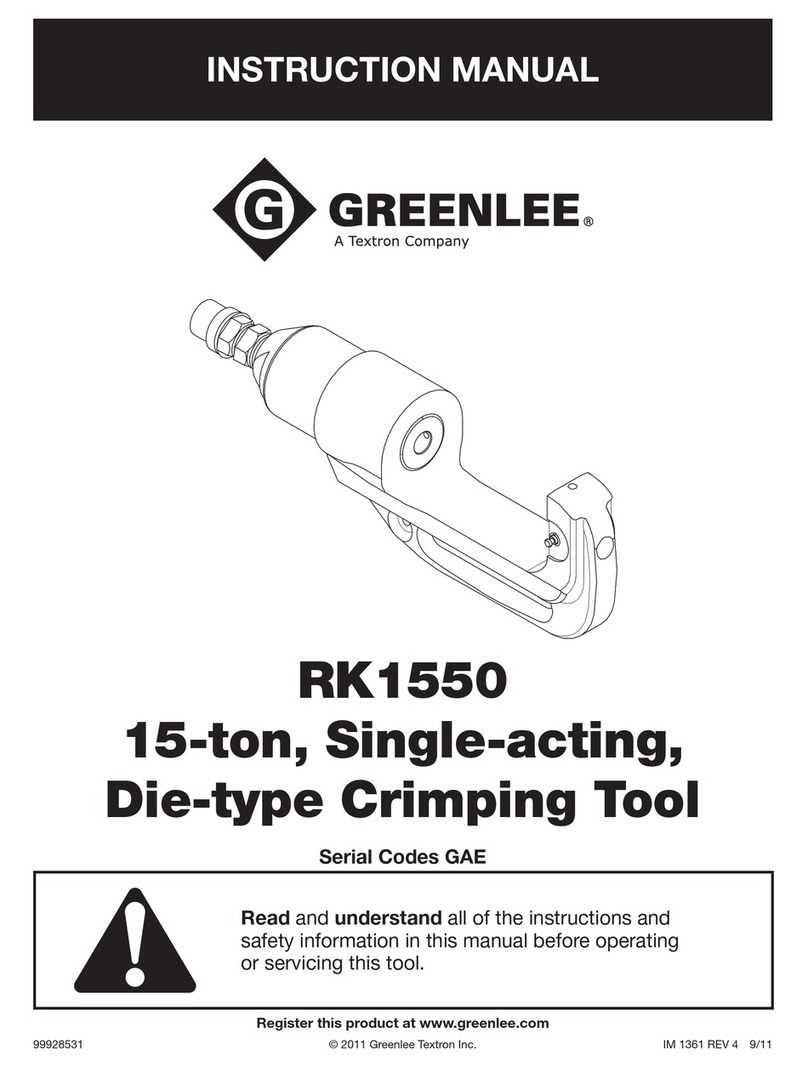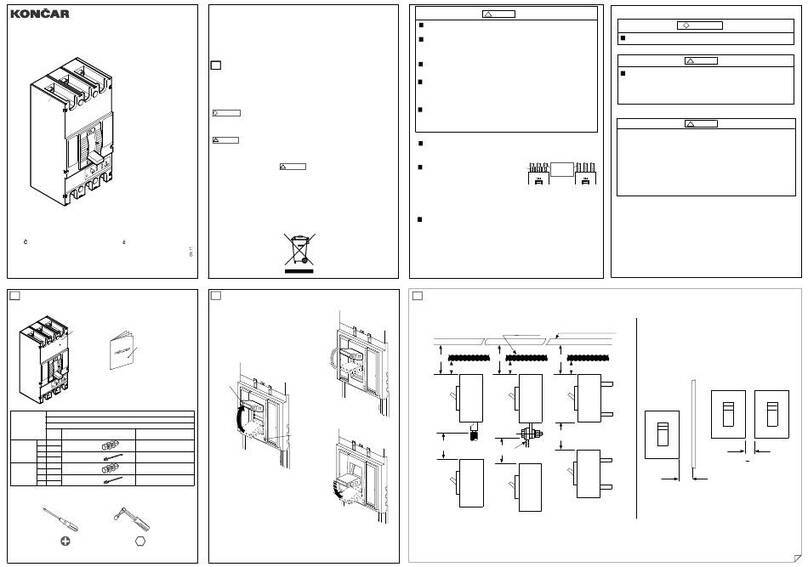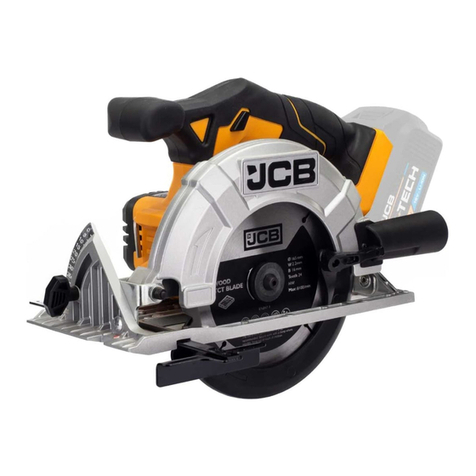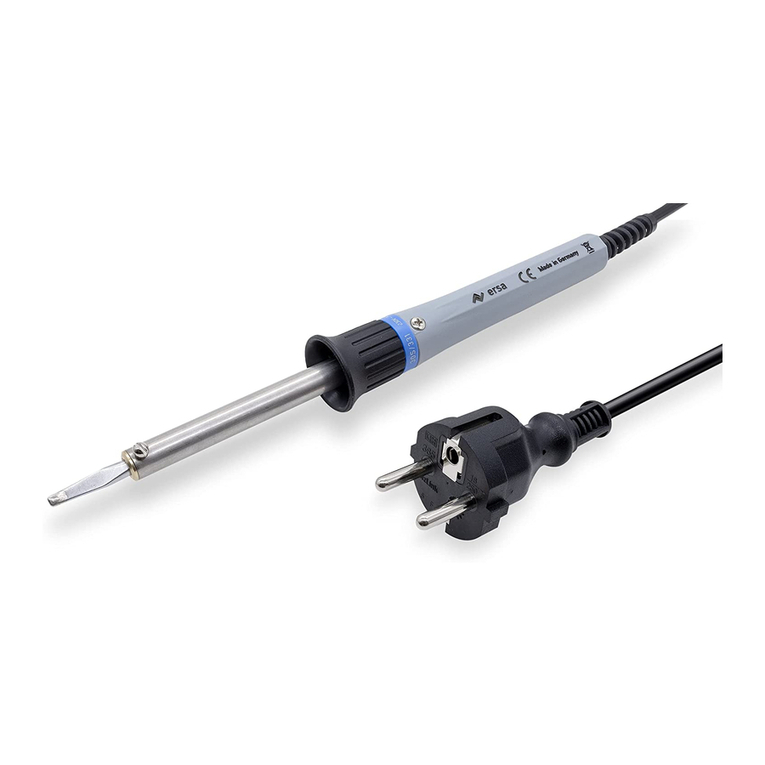Flex MS 1706 FR User manual

MS 1706 FR

Instruction manual ....................................................3
Notice d’utilisation ..................................................16
Instrucciones de funcionamiento ...........................32

MS 1706 FR Instruction manual
3
Content
Meaning of signal words . . . . . . . . . . 3
Important safety information . . . . . . . 3
GENERAL SAFETY RULES
for all power tools . . . . . . . . . . . . . . . 4
SPECIFIC SAFETY RULES
AND SYMBOLS . . . . . . . . . . . . . . . . 6
Overview . . . . . . . . . . . . . . . . . . . . . 9
Supplied components . . . . . . . . . . . 10
Operating instructions . . . . . . . . . . 10
Maintenance and care . . . . . . . . . . 14
Warranty . . . . . . . . . . . . . . . . . . . . . 16
Meaning of signal words
DANGER
DANGER indicates a potentially
hazardous situations which, if ignored,
could result in death or serious injury.
CAUTION
CAUTION indicates a potentially
hazardous situations which, if not
avoided, may result in minor or
moderate injury, or may cause machine
damage.
NOTE
NOTE emphasizes essential
information.
Important safety information
Read and understand all of the safety
precautions, warnings and operating
instructions in the Instruction manual
before operating or maintaining this
power tool.
Most accidents that result from power
tool operation and maintenance are
caused by the failure to observe basic
safety rules or precautions. An accident
can often be avoided by recognizing
a potentially hazardous situation before
it occurs, and by observing appropriate
safety procedures.
Basic safety precautions are outlined in
the “SAFETY” section of this Instruction
manual and in the sections which
contain the operation and maintenance
instructions.
Hazards that must be avoided to
prevent bodily injury or machine
damage are identified by WARNINGS
on the power tool and in this Instruction
manual.
NEVER use this power tool in a manner
that has not been specifically
recommended by FLEX.
Intented use
The wall chaser MS 1706 FR is
designed
– is designed for industrial
applications,
– for chasing and separating mineral
materials without the addition of
water
– for use with diamond cutting discs
and accessories which are indicated
in this manual or recommended by
the manufacturer.

Instruction manual MS 1706 FR
4
GENERAL POWER TOOL SAFETY WARNINGS
WARNING:
Read and understand all instructions.
Failure to follow all instructions listed below, may result in electric
shock, fire and/or serious personal injury.
SAVE THESE INSTRUCTIONS.
1. Work area
(a)
Keep work area clean and well lit.
Cluttered and dark areas invite
accidents.
(b)
Do not operate power tools in
explosive atmospheres, such as in the
presence of flammable liquids, gases or
dust. Power tools create sparks which
may ignite the dust or fumes.
(c)
Keep children and bystanders away
while operating a power tool.
Distractions can cause you to lose
control.
2. Electrical safety
(a)
Power tool plugs must match the
outlet. Never modify the plug in any way.
Do not use any adapter plugs with
earthed (grounded) power tools.
Unmodified plugs and matching outlets
will reduce risk of electric shock.
(b)
Avoid body contact with earthed or
grounded surfaces such as pipes,
radiators, ranges and refrigerators.
There is an increased risk of electric
shock if your body is earthed or
grounded.
(c)
Do not expose power tools to rain or
wet conditions. Water entering a power
tool will increase the risk of electric
shock.
(d)
Do not abuse the cord. Never use the
cord for carrying, pulling or unplugging
the power tool. Keep cord away from
heat, oil, sharp edges or moving parts.
Damaged or entangled cords increase
the risk of electric shock.
(e)
When operating a power tool
outdoors, use an extension cord suitable
for outdoor use. Use of a cord suitable
for outdoor use reduces the risk of
electric shock.
3. Personal safety
(a)
Stay alert, watch what you are doing
and use common sense when operating
a power tool. Do not use a power tool
while you are tired or under the influence
of drugs, alcohol or medication.
A moment of inattention while operating
power tools may result in serious
personal injury.
(b)
Use safety equipment. Always wear
eye protection. Safety equipment such
as dust mask, non-skid safety shoes,
hard hat, or hearing protection used
for appropriate conditions will reduce
personal injuries.
(c)
Avoid accidental starting. Ensure
the switch is in the off position before
plugging in. Carrying power tools with
your finger on the switch or plugging in
power tools that have the switch on
invites accidents.
(d)
Remove any adjusting key or wrench
before turning the power tool on.
A wrench or a key left attached to
a rotating part of the power tool may
result in personal injury.
(e)
Do not overreach. Keep proper
footing and balance at all times.
This enables better control of the
power tool in unexpected situations.

MS 1706 FR Instruction manual
5
(f)
Dress properly. Do not wear loose
clothing or jewellery. Keep your hair,
clothing and gloves away from moving
parts. Loose clothes, jewellery or long
hair can be caught in moving parts.
(g)
If devices are provided for the
connection of dust extraction and
collection facilities, ensure these are
connected and properly used. Use of
these devices can reduce dust related
hazards.
4. Power tool use and care
(a)
Do not force the power tool. Use the
correct power tool for your application.
The correct power tool will do the job
better and safer at the rate for which it
was designed.
(b)
Do not use the power tool if the
switch does not turn it on and off. Any
power tool that cannot be controlled with
the switch is dangerous and must be
repaired.
(c)
Disconnect the plug from the power
source before making any adjustments,
changing accessories, or storing power
tools. Such preventive safety measures
reduce the risk of starting the power tool
accidentally.
(d)
Store idle power tools out of the
reach of children and do not allow
persons unfamiliar with the power tool or
these instructions to operate the power
tool. Power tools are dangerous in the
hands of untrained users.
(e)
Maintain power tools. Check for
misalignment or binding of moving parts,
breakage of parts and any other
condition that may affect the power tools
operation. If damaged, have the power
tool repaired before use.
Many accidents are caused by poorly
maintained power tools.
(f)
Keep cutting tools sharp and clean.
Properly maintained cutting tools with
sharp cutting edges are less likely to
bind and are easier to control.
(g)
Use the power tool, accessories and
tool bits etc., in accordance with these
instructions and in the manner intended
for the particular type of power tool,
taking into account the working
conditions and the work to be
performed. Use of the power tool for
operations different from those intended
could result in a hazardous situation.
5. Service
(a)
Tool service must be performed only
by a FLEX authorized service center.
Service or maintenance performed by
unqualified personnel could result in a
risk of injury.
(b)
When servicing a tool, use only
identical replacement parts. Follow
instructions in the Maintenance section
of this manual. Use of unauthorized
parts or failure to follow Maintenance
Instruction may create a risk of electric
shock or injury.
SPECIFIC SAFETY RULES AND SYMBOLS
1. Electrical safety
DANGER:
Improper connection of the cord can
result in risk of electric shock. The plug
must be plugged into a matching outlet
that is properly installed in accordance
with all local Codes and ordinances.
Check with a qualified electrician or
service personnel if you are in doubt. Do
not modify the plug provided with the
product – if it will not fit the outlet, have a
proper outlet installed by a qualified
electrician. Do not use any type of
adapter with this product.
2. Personal safety
(a)
ACCESSORIES MUST BE RATED
FOR AT LEAST THE SPEED
RECOMMENDED ON THE TOOL

Instruction manual MS 1706 FR
6
LABEL. Wheels and other accessories
running over rated speed can fly apart
and cause injury.
(b)
USE PROPER SAFETY
EQUIPMENT. Wear safety goggles to
protect your eyes, non-skid rubber soled
safety shoes or boots and rubber gloves
(to prevent being grounded) and wear a
protective mask (to minimize breathing
in the fine dust created during use).
ALWAYS wear ear plugs when using the
tool for extended periods.
Prolonged exposure to high intensity
noise can cause hearing loss.
(c)
WARNING:
SOME DUST CREATED BY POWER
SANDING, SAWING, GRINDING,
DRILLING, AND OTHER
CONSTRUCTION ACTIVITIES contains
chemicals known to cause cancer, birth
defects or other reproductive harm.
Some examples of these chemicals are:
– lead from lead-based paints,
– crystalline silica from bricks and
cement and other masonry products,
and
– arsenic and chromium from
chemically-treated lumber.
Your risk from these exposures varies,
depending an how often you do this type
of work. To reduce your exposure to
these chemicals: work in a well
ventilated area, and work with approved
safety equipment, such as those just
masks that are specially designed to
filter out microscopic particles.
(d)
Hold tools by insulated gripping
surfaces when performing an operation
where the cutting tool may contact
hidden wiring or its own cord. Contact
with a
“
live
”
wire will make exposed
metal parts of the tool
“
live
”
and shock
the operator.
(e)
Blocking the cutting discs will result in
considerable recoil forces. Switch off the
power tool immediately.
3. Power tool use and care
(a)
NEVER use a power tool for
applications other than those specified
in this Instruction manual.
(b)
NEVER touch moving parts.
NEVER place your hands, fingers or
other body parts near the tool's moving
parts.
(c)
NEVER leave tool running
unattended. Turn power off. Don't leave
tool until it comes to a complete stop.
(d)
NEVER operate this tool without all
guards or safety features in place and in
proper working order. If maintenance or
servicing requires the removal of a
guard or safety feature, be sure to
replace the guard or safety feature
before resuming operation of the tool.
(e)
CAUTION when working in unknown
areas! Electric, gas or water lines below
the surface may be damaged. Use
suitable detectors to scan the work area
beforehand.
(f)
CAUTION when working in
supporting walls! Observe structural
calculations! Before starting work, obtain
the permission of the structural
engineer, architect or site manager
responsible. The permitted chasing
depth depends on the chasing length,
wall thickness and building material.
(g)
NEVER use a tool which is defective
or operating abnormally. If the tool
appears to be operating unusually,
making strange noises, or otherwise
appears defective, stop using it
immediately and arrange for repairs by
a FLEX authorized service center.
4. Service
(a)
Cleaning or removal of lead-based
paint is not recommended. Lead-based
paint should only be cleaned or removed
by a professional.

MS 1706 FR Instruction manual
7
(b)
DANGER:
There are certain applications for which
this tool was designed. FLEX strongly
recommends that this tool NOT be
modified and/or used for any application
other than for which it was designed.
lf you have any questions relative to its
application DO NOT use the tool until
you have written FLEX and we have
advised you.
5. Definitions for symbols used on this
tool
V.............volts
~
............Alternating current
Hz ..........hertz
A.............amperes
n
o
...........no load speed
min
-1
.......revolutions per minute
...........double insulation
.........Wear safety goggles!
6. Double insulation for safer operation
To ensure safer operation of this power
tool, FLEX has adopted a double
insulation design.
“
Double insulation
”
means that two physically separated
insulation systems have been used to
insulate the electrically conductive
materials connected to the power supply
from the outer frame handled by the
operator. Therefore, either the symbol
or the words
“
Double insulation
”
appear on the power tool or on the
nameplate.
Although this system has no external
grounding, you must still follow the
normal electrical safety precautions
given in this Instruction Manual,
including not using the power tool in wet
environments.
To keep the double insulation system
effective, follow these precautions:
– Only FLEX AUTHORIZED SERVICE
CENTER should disassemble or
assemble this power tool, and only
genuine FLEX replacement parts
should be installed.
– Clean the exterior of the power tool
only with a soft cloth moistened with
soapy water, and dry thoroughly.
– Never use solvents, gasoline or
thinners on plastic components;
otherwise the plastic may dissolve.
7. Additional Warnings
(a)
Some dust created by power
sanding, sawing, grinding, drilling and
other construction activities contains
chemicals known to the State of
California to cause cancer, birth defects
or other reproductive harm. Some
examples of these chemicals are:
– Lead from lead-based paints.
– Crystalline silica from bricks, cement,
and other masonry products.
– Arsenic and chromium from
chemically-treated lumber.
Your risk from these exposures varies,
depending upon how often you do this
type of work. To reduce your exposure to
these chemicals:
– Work in a well-ventilated area.
– Work with approved safety
equipment, such as dust masks that
are specially designed to filter out
microscopic particles.
– Avoid prolonged contact with dust
from power sanding, sawing,
grinding, drilling, and other
construction activities. Wear
protective clothing and wash
exposed areas with soap and water.
Allowing dust to get into your mouth
or eyes or to lie on the skin may
promote absorption of harmful
chemicals.
SAVE THESE INSTRUCTIONS AND MAKE THEM AVAILABLE
TO OTHER USERS AND OWNERS OF THIS TOOL!

Instruction manual MS 1706 FR
8
Overview
1 Milling table
2. Milling depth adjustment
a) Milling depth scale
b) Milling depth stop
3. Guard hood
4. Handle/Intake flange
5. Lock for guard hood
6. Release handle
for swivelling off the drive unit
7. Handle
8. Release rocker
for lowering the milling unit
9. Switch
Switches the power tool on and off.
10.Cutting direction arrow
11.4.0 m power cord with plug
12.Spindle lock
Secures the spindle when the tool
is changed.
13.Gearbox with direction of rotation
arrow
14.Stop
when swivelling off the drive unit
15.Rating plate *
*not illustrated

MS 1706 FR Instruction manual
9
Supplied components
Wall chaser MS 1706 FR
2 diamond cutting discs Ø 5½“/140 mm
(part no.: 334.472)
1 SDS-Clic quick-release clamping nut
(part no.: 253.049)
2 clamping flanges (part no.: 191.612)
5 distance washers 5 mm
(part no.: 318.914)
1 adapter for dust extractor 32/28 mm
(part no.: 327.026)
1 web remover (part no.: 229.253)
1 Plastic carrying case
(part no.: 327.034)
1 operating manual (part no. 334.944)
Operating instructions
DANGER
Before performing any work on the
power tool, pull out the mains plug!
Before switching on the wall
chaser
– Unpack the wall chaser and check
that no parts are missing or
damaged.
Switch on and off
CAUTION
Following a power failure, the switched-
on machine will start running again.
– Press the switch (9.) and push
forwards.
– Lock the switch by depressing it at
the front.
– To switch off the wall chaser, release
the switch by pressing it at the back.
Changing the cutting discs/
changing the groove width
DANGER
Before performing any work on the wall
chaser, pull out the mains plug.
Use only cutting discs with max.
diameter 5½“/140 mm.

Instruction manual MS 1706 FR
10
1. Pull out the mains plug.
2. Lift the lock (5.) for the guard hood
and rotate by 180°.
3. Remove the guard hood (3.).
4. Press the spindle lock (12.) and
loosen the quick-release clamping
nut.
DANGER
Risk of injury and damage.
The direction of rotation indicated on
the cutting disc must agree with the
direction-of-rotation arrow on the
gearbox (13).
NOTE
The rough side of the quick-release
clamping nut always faces the cutting
disc or distance washer.
5. Remove the cutting discs (b),
clamping flange (d) and distance
washers (c).
To change the cutting discs:
1. Attach new cutting discs (b),
distance washers (c) and clamping
flange (d) in reverse sequence.
2. Screw on the quick-release
clamping nut (a). Depress the
spindle lock (12.) and manually
tighten the quick-release clamping
nut (a).
To change the groove width:
The groove width can be set by
rearranging the distance washers.
NOTE
The minimum groove width is 10 mm.
In all distance washers (c) are fitted in
front of the quick-release clamping nut
(a).

MS 1706 FR Instruction manual
11
1. Attach the cutting disc (b), distance
washers (c) according to the
required groove width and clamping
flange (d).
2. Attach the remaining distance
washers (c).
3. Screw on the quick-release
clamping nut. Depress the spindle
lock (12.) and manually tighten the
quick-release clamping nut (a).
4. Gently depress the milling unit and
attach the guard hood (3.).
5. Lift lock (5.) for guard hood and
rotate by 180° until it engages.
6. Insert the mains plug into the
socket.
7. Switch on the wall chaser (without
locking the switch) and leave
running for approx. 30 seconds.
Check for quiet running.
Adjusting the cutting depth
1. Pull out the mains plug.
2. Depress the lock on the milling depth
stop (2b) and set the stop to the
required depth. Lock the milling
depth stop (2b) at the required
depth.
Using a dust extraction system
CAUTION
When using the wall chaser, connect
a Class M dust extractor.
If a dust bag is used which is not
authorised for use with dry construction
dust, the amount of dust particles in the
air may increase at the work place.
Over a prolonged period high concen-
trations of dust in the air may damage
the human respiratory system.
Insert the special dust bag for dry con-
struction dust into your dust extractor
according to the instructions supplied
with the dust extractor.
Connect extraction hose to the dust

Instruction manual MS 1706 FR
12
extraction system. Follow the operating
instructions for the dust extraction
system! Check the attachment!
If required, use an appropriate adapter.
NOTE
If your dust extractor requires a special
connector, the clip-on connection can
be removed and a matching adapter
selected from the FLEX accessories
range.
Making cuts
DANGER
The stipulated cutting direction is
indicated by the cutting-direction arrow
(10.) on the guard hood and must
always be observed.
Always guide the wall chaser with both
hands. Use the designated gripping
areas. One hand on the power tool, the
other hand on the handle (4.) or (7.).
If there is a risk of cutting through live
cables, do not touch the metal parts of
the machine.
Diamond cutting discs become very hot
during operation. Do not touch them
until they have cooled down.
1. Position the power tool milling
table (1) fully on the area which is to
be processed.
To align with marks, use the notch
in the milling table.
2. Switch on the device.
3. Press the release rocker (8.) and
slowly lower the milling unit and
immerse into the material.
4. Move the wall chaser in the
indicated cutting direction.
5. After making the cut, swivel the
power tool – with the motor running
– all the way out of the groove until
the release rocker (8.) engages.
NOTE
When the power tool is switched off, the
tool continues running briefly.
6. Switch off the power tool.
7. Remove the remaining web with the
supplied web remover.
Swivelling the motor unit
To improve guiding the cut and
handling, the drive unit can be
swivelled.

MS 1706 FR Instruction manual
13
– Pull up the release handle (6.) and
swivel the motor unit as far as it will
go.
– The release handle must engage in
the new position.
The user can now adopt an
ergonomically favourable posture when
making a drawing cut.
Operating instructions
To make vertical cuts, swivel the motor
unit as described previously.
Place the machine above and pull
downwards.
Your right hand guides the motor unit,
your left hand pulls on the handle (7.).
To make horizontal cuts, push the
power tool.
Your right hand guides the motor unit,
your left hand is placed on the handle/
intake flange (4.)
Tips
When making cuts in a very hard
material, the diamond cutting disc may
overheat and be damaged.
– Immediately stop cutting and leave
the cutting disc to cool down at no-
load speed.
A spark ring around the cutting disc and
a decreasing cutting rate are signs of a
blunt cutting disc.
– Short cuts in abrasive materials, e.g.
the sharpening stone for diamond
tools in the range of accessories,
sharpen the cutting disc.
– If this does not improve the cutting
performance, replace the cutting
discs.
Maintenance and care
DANGER
Before performing any work on the wall
chaser, pull out the mains plug.
Cleaning
Regularly clean the power tool and
ventilation slots. Frequency of cleaning

Instruction manual MS 1706 FR
14
is dependent on the material and
duration of use.
Regularly blow out the housing interior
and motor with dry compressed air.
CAUTION
Wear safety glasses while using
compressed air.
All plastic parts should be cleaned with
soft damp cloth. NEVER use solvents
to clean plastic parts. They could
possibly dissolve or otherwise damage
the material.
Gear housing
The gear housing should never be
loosened or opened, except by a FLEX
authorized service center. Doing so will
void the product warranty.
Brush inspection and lubrication
For your continued safety and electrical
protection, brush inspection and
replacement on this tool should ONLY
be performed by an authorized service
center for FLEX Power Tools.
At approximately 100 hours of use, take
or send your tool to your nearest
authorized service center for FLEX
Power Tools to be thoroughly cleaned
and inspected; worn parts replaced;
and when necessary, relubricated with
fresh lubricant if required; reassembled
with new brushes; and performance
tested.
Any loss of power before the above
maintenance check may indicate the
need for immediate servicing of your
tool. DO NOT CONTINUE TO
OPERATE TOOL UNDER THIS
CONDITION. lf proper operating
voltage is present, return your tool to a
FLEX authorized service center for
immediate service.
Repairs
All quality tools will eventually require
servicing or replacement of parts due to
wear from normal use. These
operations, including brush inspection
and replacement, should ONLY be
performed by an authorized service
center for FLEX Power Tools.
All repairs made by these agencies are
fully guaranteed against defective
material and workmanship. We cannot
guarantee repairs made or attempted
by anyone other than these agencies.
Should you have any questions about
your tool, feel free to write us at any
time. In any communications, please
give all information shown on the
nameplate of your tool (model number,
type, serial number, etc.).
Warranty
FLEX North America limited one
year Warranty
FLEX North America warrants its
Professional Power Tools for a period
of one year from the date of original
purchase. We will repair or replace at
our option, any part or parts of the
product and accessories covered under
this warranty, which, after examination,
prove(s) to be defective in
workmanship or material during the
warranty period. For repair or
replacement, return the complete tool
or accessory, transportation prepaid, to
your nearest Authorized Service
Station. Proof of purchase may be
required. This warranty does not apply
to repair or replacement due to misuse,
abuse, normal wear and tear or repairs
attempted or made by someone other
than our Authorized Service Stations.

MS 1706 FR Instruction manual
15
ANY IMPLIED WARRANTY,
INCLUDING THE IMPLIED
WARRANTIES OF
MERCHANTABILITY AND FITNESS
FOR PARTICULAR PURPOSE, WILL
LAST ONLY FOR ONE (1) YEAR
FROM THE DATE OF PURCHASE.
To obtain information on warranty
performance, please write to:
FLEX - North America, Inc.
2720 E. Phillips Road
Greer, SC 29650, U.S.A.
1-877-331-6103 (main line)
1-888-331-6104 (fax line)
www.FlexNorthAmerica.com
THE FOREGOING OBLIGATION IS
FLEX NORTH AMERICA'S SOLE
LIABILITY UNDER THIS OR ANY
IMPLIED WARRANTY AND UNDER
NO CIRCUMSTANCES SHALL FLEX
NORTH AMERICA BE LIABLE FOR
ANY INCIDENTAL OF
CONSEQUENTIAL DAMAGES.
Some states do not allow limitations on
how long an implied warranty lasts or
the exclusion or limitation of incidental
or consequential damages, so the
above limitation or exclusion may not
apply to you.
This warranty gives you specific legal
rights and you may also have other
legal rights, which vary from state to
state.

Notice d’utilisation MS 1706 FR
16
Sommaire
Symboles utilisés . . . . . . . . . . . . . . 17
Informations de sécurité
importantes . . . . . . . . . . . . . . . . . . . 17
INDICATIONS GÉNÉRALES DE
SÉCURITÉ . . . . . . . . . . . . . . . . . . . 18
RÈGLES ET SYMBOLES
SPÉCIFIQUES DE SÉCURITÉ . . . 21
Vue d’ensemble . . . . . . . . . . . . . . . 24
Contenu de l’emballage . . . . . . . . . 25
Instructions d’utilisation . . . . . . . . . 25
Maintenance et nettoyage . . . . . . . 30
Garantie . . . . . . . . . . . . . . . . . . . . . 31
Symboles utilisés
AVERTISSEMENT
Un texte précédé du terme DANGER
signale une situation potentiellement
dangereuse qui, si vous n’en tenez pas
compte, s’assortit d’un danger de mort
ou de blessures graves.
PRUDENCE
Un texte précédé du terme
PRUDENCE signale une situation
potentiellement dangereuse qui, si
vous n’en tenez pas compte, s’assortit
d’un risque de blessure mineure ou
modéré, ou d’endommagement de la
machine.
REMARQUE
Le terme REMARQUE met en évidence
des informations essentielles.
Informations de sécurité
importantes
Avant d’utiliser ou d’entretenir cet outil
électroportatif, veuillez lire et bien assimiler
tous les textes sur les précautions de
sécurité, les avertissements et les
instructions d’utilisation énoncées dans la
présente notice d’utilisation.
La plupart des accidents provoqués par
des outils électroportatifs en
fonctionnement et lors de leur maintenance
sont causés par le fait que des règles ou
précautions de sécurité de base n'ont pas
été respectées. Il est souvent possible
d’éviter un accident en anticipant une
situation potentiellement dangereuse avant
même qu’elle n’apparaisse, et en
respectant les procédures de sécurité
appropriées.
Les précautions de sécurité de base
à prendre sont décrites au chapitre
« SÉCURITÉ » de cette notice d’utilisation
et aux chapitres contenant les instructions
d’utilisation et de maintenance.
Les risques à éviter pour éviter des
dommages corporels et d’endommager la
machine sont identifiés par des
MENTIONS D’AVERTISSEMENT sur l’outil
électro-portatif et dans la présente notice
d’utilisation.
N’utilisez JAMAIS cet outil électroportatif
d’une façon qui n’a pas été spécifiquement
recommandée par FLEX.
Conformité d’utilisation
Cette rainureuse murale MS 1706 FR est
destinée
– Aux applications professionnelles
dans l’industrie et l’artisanat.
– à ménager des fentes dans des
matériaux minéraux et à les découper,
sans ajout d’eau dans les deux cas
– à l’emploi avec des disques à découper
diamantés et avec les accessoires
indiqués dans la présente notice
ou avec ceux recommandés par le
fabricant.

MS 1706 FR Notice d’utilisation
17
INDICATIONS GÉNÉRALES DE SÉCURITÉ
ATTENTION !
Lire toutes les indications. Le non-respect des instructions indiquées
ci-après peut entraîner un choc électrique, un incendie et / ou de graves blessures
sur les personnes.
La notion d’ « outil électroportatif » mentionnée par la suite se rapporte à des outils
électriques raccordés au secteur (avec câble de raccordement) et à des outils
électriques à batterie (sans câble de raccordement).
GARDER PRÉCIEUSEMENT CES INSTRUCTIONS DE SÉCURITÉ.
1. Place de travail
(a) Maintenez l’endroit de travail propre
et bien éclairé. Un lieu de travail en
désordre ou mal éclairé augmente le
risque d’accidents.
(b) N’utilisez pas l’appareil dans un
environnement présentant des risques
d’explosion et où se trouvent des
liquides, des gaz ou poussières
inflammables. Les outils
électroportatifs génèrent des étincelles
risquant d’enflammer les poussières
ou les vapeurs.
(c) Tenez les enfants et autres
personnes éloignés durant l’utilisation
de l’outil électroportatif. En cas
d’inattention vous risquez de perdre le
contrôle sur l’appareil.
2. Sécurité relative au système
électrique
(a) La fiche de secteur de l’outil
électroportatif doit être appropriée à la
prise de courant. Ne modifiez en aucun
cas la fiche. N’utilisez pas de fiches
d’adaptateur avec des appareils avec
mise à la terre. Les fiches non
modifiées et les prises de courant
appropriées réduisent le risque de choc
électrique.
(b) Évitez le contact physique avec des
surfaces mises à la terre tels que
tuyaux, radiateurs, fours et
réfrigérateurs. Il y a un risque élevé de
choc électrique au cas où votre corps
serait relié à la terre.
(c) N’exposez pas l’outil électroportatif
à la pluie ou à l’humidité. La pénétration
d’eau dans un outil électroportatif
augmente le risque d’un choc
électrique.
(d) N’utilisez pas le câble à d’autres fins
que celles prévues, n’utilisez pas le
âble pour porter l’appareil ou pour
l’accrocher ou encore pour le
débrancher de la prise de courant.
Maintenez le câble éloigné des sources
de chaleur, des parties grasses, des
bords tranchants ou des parties
de l’appareil en rotation. Un câble
endommagé ou torsadé augmente
le risque d’un choc électrique.
(e) Au cas où vous utiliseriez l’outil
électroportatif à l’extérieur, utilisez une
rallonge autorisée homologuée pour les
applications extérieures. L’utilisation
d’une rallonge électrique homologuée
pour les applications extérieures réduit
le risque d’un choc électrique.
3. Sécurité des personnes
(a) Restez vigilant, surveillez ce que
vous faites. Faites preuve de bon en
utilisant l’outil électroportatif. N’utilisez
pas l’appareil lorsque vous êtes fatigué
ou après avoir consommé de l’alcool,
des drogues ou avoir pris des
médicaments. Un moment d’inattention
lors de l’utilisation de l’appareil peut
entraîner de graves blessures pour les
personnes.

Notice d’utilisation MS 1706 FR
18
(b) Portez des équipements de
protection. Portez toujours des lunettes
de protection. Le fait de porter des
équipements de protection personnels
tels que masque anti-poussières,
chaussures de sécurité antidérapantes,
casque de protection ou protection
acoustique suivant le travail à effectuer,
réduit le risque de blessures pour les
personnes.
(c) Évitez une mise en service par
mégarde. Assurez-vous que
l’interrupteur est effectivement en
position d’arrêt avant de retirer la fiche
de la prise de courant. Le fait de porter
l’appareil avec le doigt sur l’interrupteur
ou de brancher l’appareil sur la source
de courant lorsque l’interrupteur est en
position de fonctionnement, peut
entraîner des accidents.
(d) Enlevez tout outil de réglage ou
toute clé avant de mettre l’appareil en
fonctionnement. Une clé ou un outil se
trouvant sur une partie en rotation peut
causer des blessures.
(e) Ne surestimez pas vos capacités.
Veillez à garder toujours une position
stable et équilibrée. Ceci vous permet
de mieux contrôler l’appareil dans des
situations inattendues.
(f) Portez des vêtements appropriés.
Ne portez pas de vêtements amples ni
de bijoux. Maintenez cheveux,
vêtements et gants éloignés des parties
de l’appareil en rotation. Des vêtements
amples, des bijoux ou des cheveux
longs peuvent être happés par des
pièces en mouvement.
(g) Si des dispositifs servant à aspirer
ou à recueillir les poussières doivent
être utilisés, vérifiez que ceux-ci soient
effectivement raccordés et qu’ils sont
correctement utilisés. L’utilisation de
tels dispositifs réduit les dangers dus
aux poussières.
4. Utilisation et emploi soigneux de
l’outil électroportatif
(a) Ne surchargez pas l’appareil.
Utilisez l’outil électroportatif approprié
au travail à effectuer. Avec l’outil
électroportatif approprié, vous
travaillerez mieux et avec plus de
sécurité à la vitesse pour laquelle il est
prévu.
(b) N’utilisez pas un outil électroportatif
dont l’interrupteur est défectueux. Un
outil électroportatif qui ne peut plus être
mis en ou hors fonctionnement est
dangereux et doit être réparé.
(c) Retirer la fiche de la prise de courant
avant d’effectuer des réglages sur
l’appareil, de changer les accessoires,
ou de ranger l’appareil. Cette mesure
de précaution empêche une mise en
fonctionnement par mégarde.
(d) Gardez les outils électroportatifs
non utilisés hors de portée des enfants.
Ne permettez pas l’utilisation de
l’appareil à des personnes qui ne se
sont pas familiarisées avec celui-ci ou
qui n’ont pas lu ces instructions. Les
outils électroportatifs sont dangereux
lorsqu’ils sont utilisés par des
personnes non initiées.
(e) Prenez soin des outils
électroportatifs. Vérifiez que les parties
en mouvement fonctionnent
correctement et qu’elles ne soient pas
coincées, et contrôlez si des parties
sont cassées ou endommagées de telle
sorte que le bon fonctionnement de
l’appareil s’en trouve entravé. Faites
réparer les parties endommagées
avant d’utiliser l’appareil. De nombreux
accidents sont dus à des outils
électroportatifs mal entretenus.
(f) Maintenez les outils de coupe
aiguisés et propres. Des outils
soigneusement entretenus avec des
bords tranchants bien aiguisés se
coincent moins souvent et peuvent être
guidés plus facilement.

MS 1706 FR Notice d’utilisation
19
(g) Utilisez les outils électroportatifs,
les accessoires, les outils à monter etc.
conformément à ces instructions et aux
prescriptions en vigueur pour ce type
d’appareil. Tenez compte également
des conditions de travail et du travail
à effectuer. L’utilisation des outils
électroportatifs à d’autres fins que
celles prévues peut entraîner des
situations dangereuses.
5. Service
(a) Le service après-vente et la
maintenance sont des opérations
exclusivement réservés à un Centre
agréé de service après-vente FLEX.
Les opérations de service après-vente
ou de maintenance accomplies par du
personnel non qualifié peuvent
engendrer des risques de blessures.
(b) N’utilisez que des pièces de
rechange identiques lors de la
maintenance de l’appareil. Respectez
les instructions figurant à la section «
Maintenance » de cette notice.
L’utilisation de pièces non autorisées
ou le non-respect des instructions de
maintenance peut entraîner un choc
électrique ou des blessures.

Notice d’utilisation MS 1706 FR
20
RÈGLES ET SYMBOLES SPÉCIFIQUES DE SÉCURITÉ
1. Sécurité électrique
AVERTISSEMENT :
Le raccordement incorrect du câble
peut engendrer un risque de choc
électrique.
Il faut enfoncer la broche dans le trou
correspondant de la prise adaptée à la
fiche ; la prise doit avoir été
correctement installée en conformité
avec les règlements et arrêtés locaux.
Vérifiez avec un électricien qualifié ou
le personnel du service après-vente si
vous n’êtes pas sûr. Ne modifiez pas la
fiche mâle livrée avec l’appareil. Si elle
ne rentre pas dans la prise, faites
installer une prise appropriée par un
électricien qualifié. Ne tentez pas
d’utiliser quelque adaptateur que ce
soit avec ce produit.
2. Sécurité personnelle
(a) LA VITESSE NOMINALE DES
ACCESSOIRES DOIT ÊTRE AU
MINIMUM ÉGALE À LA VITESSE
RECOMMANDÉE SUR LA PLAQUE
SIGNALÉTIQUE DE L’APPAREIL. Les
disques et d’autres accessoires
tournant au dessus de leur vitesse
nominale peuvent se briser et
occasionner des blessures.
(b) UTILISEZ UN ÉQUIPEMENT DE
SÉCURITÉ ADAPTÉ. Portez des
lunettes enveloppantes pour vous
protéger les yeux, des chaussures de
sécurité à semelle antidérapante en
caoutchouc, ou des bottes, et des gants
en caoutchouc pour empêcher de vous
retrouver connecté à la terre), et portez
une protection faciale (pour éviter de
respirer la poussière fine engendrée
pendant l’utilisation). Portez
TOUJOURS des bouchons d’oreilles
lorsque vous utilisez l’outil pendant une
période prolongée.
Une exposition prolongée à un haut
niveau de bruit peut provoquer une
baisse de l’acuité auditive.
(c) AVERTISSEMENT :
certaines poussières dégagées
pendant le passage au jet de sable, le
sciage, le meulage, le forage et
d’autres activités de construction
contiennent des produits chimiques
capables de provoquer le cancer, des
malformations à la naissance ou de
nuire à l’appareil reproducteur. Voici
quelques uns de ces produits
chimiques :
– Plomb présent dans les peintures
à base de plomb,
– Cristaux de silice dans les briques,
le ciment et d’autre produits de
maçonnerie et
– L’arsenic et le chrome présent dans
le bois de construction chimiquement
traité.
Le risque que vous encourez à la suite
de ces expositions varie en fonction de
la fréquence selon laquelle vous
effectuez ce type de travail. Pour
réduire votre exposition à ces produits
chimiques, travaillez dans une zone
bien aérée et avec un équipement de
sécurité agréé dont par exemple ces
masques spécialement conçus pour
retenir les particules microscopiques.
(d) Lorsque vous travaillez avec des
outils, tenez-les par leurs surfaces de
préhension isolées s’ils comportent le
risque que l’outil de coupe entre en
contact avec des fils invisibles ou avec
son propre cordon d'alimentation.
L’entrée en contact de pièces de l’outil
avec des fils sous tension met le corps
de l’outil sous tension et l’opérateur
risque un choc électrique.
(e) Le blocage subit des disques
à découper engendre des forces de
recul considérables. Éteignez
immédiatement la machine.
Other manuals for MS 1706 FR
3
Table of contents
Languages:
Other Flex Power Tools manuals
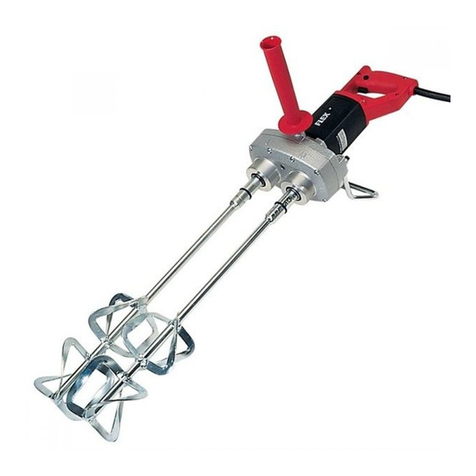
Flex
Flex R 600 VV User manual
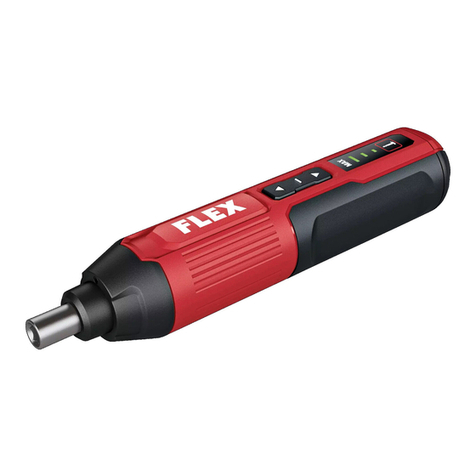
Flex
Flex SD 5-300 4.0 User manual
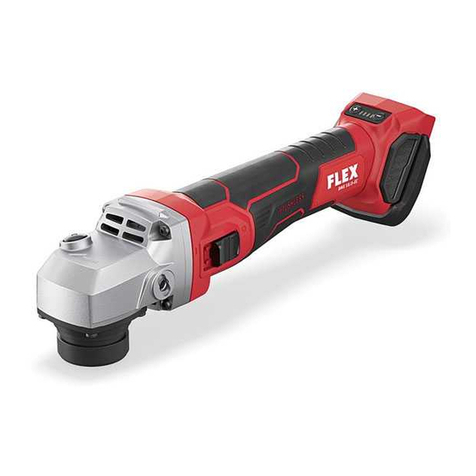
Flex
Flex TRINOXFLEX BME 18.0-EC + LK 152 User manual
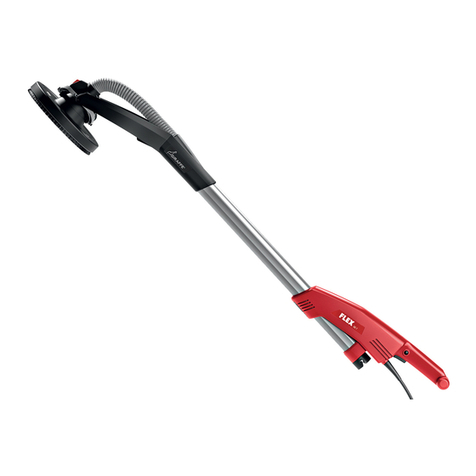
Flex
Flex GE 7 User manual
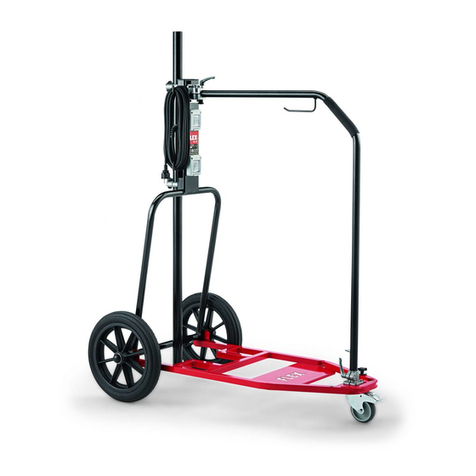
Flex
Flex Giraffemobile GM 340 User manual
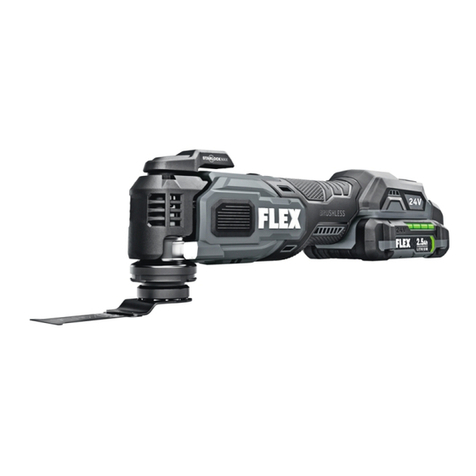
Flex
Flex FX4111 User manual
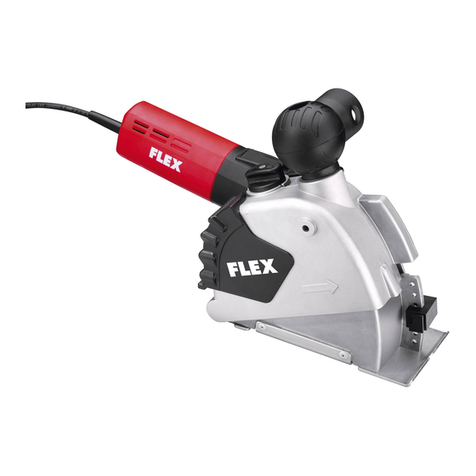
Flex
Flex MS 1706 FR User manual
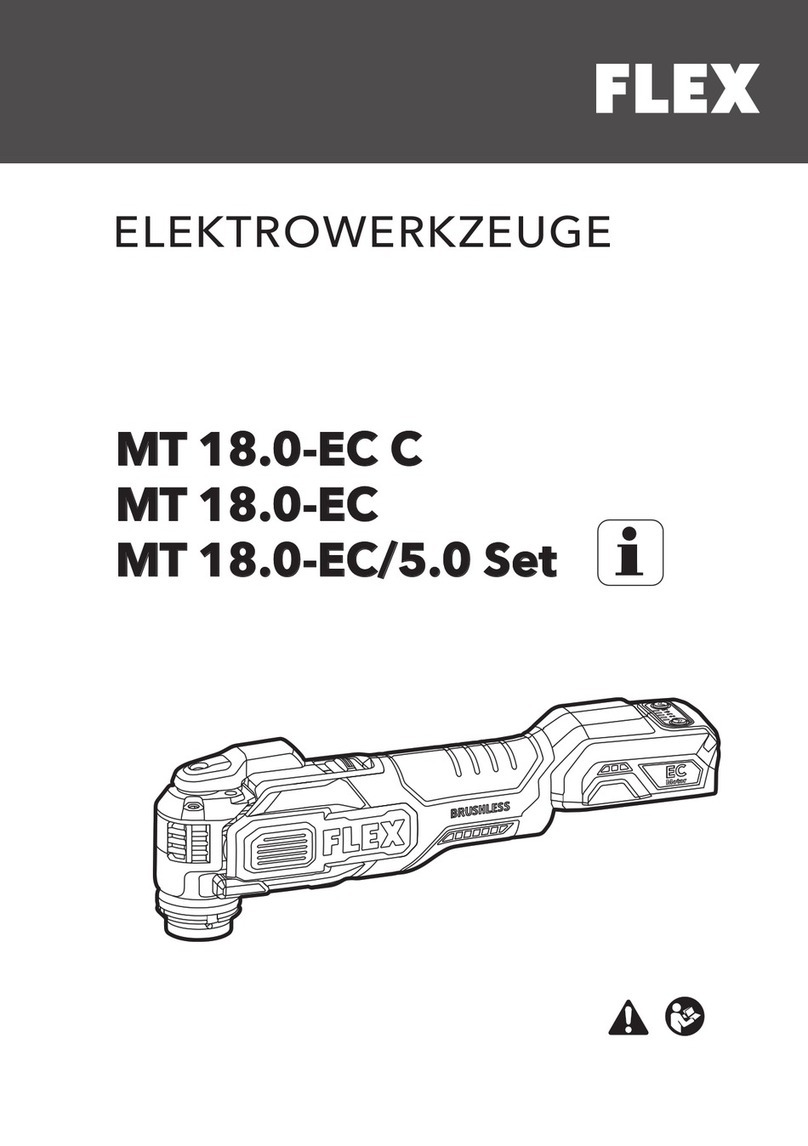
Flex
Flex MT 18.0-EC C User manual
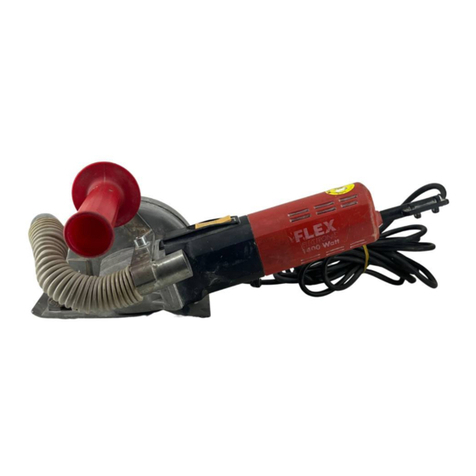
Flex
Flex F 1509 FR User manual
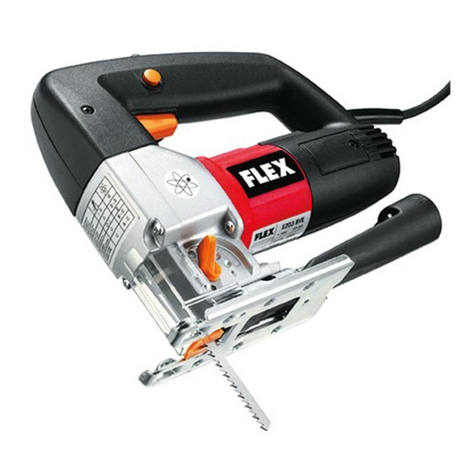
Flex
Flex S 703 BVE User manual
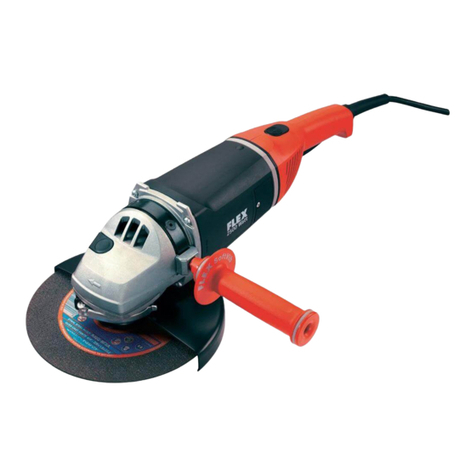
Flex
Flex L 3206 CD User manual
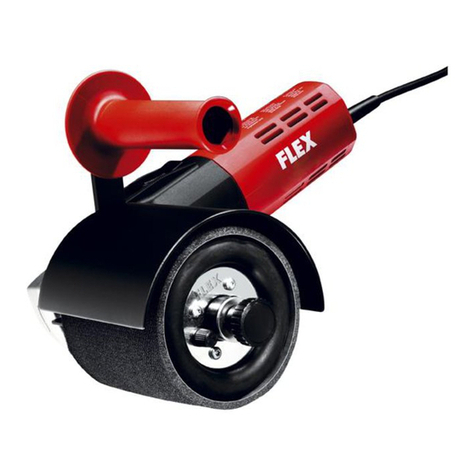
Flex
Flex LP 1503 VR User manual
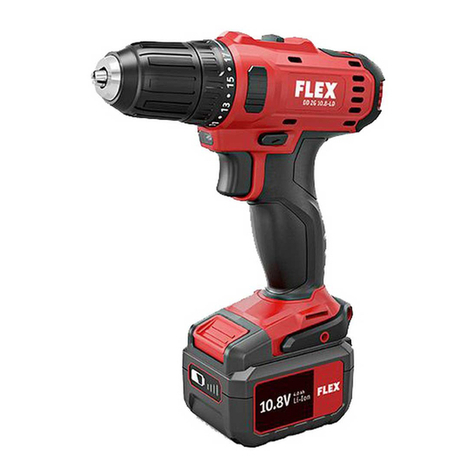
Flex
Flex DD 2G 10.8-LD User manual

Flex
Flex DGE 8-32 User manual
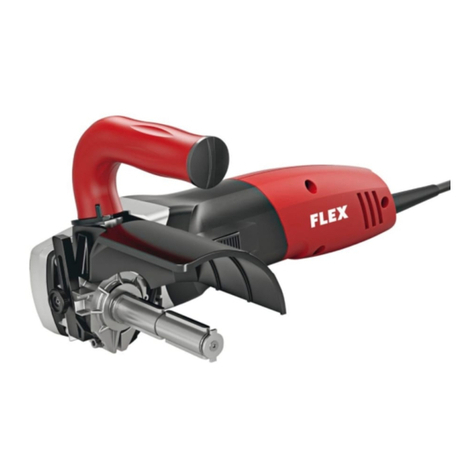
Flex
Flex TRINOXFLEX BME 14-3 L User manual
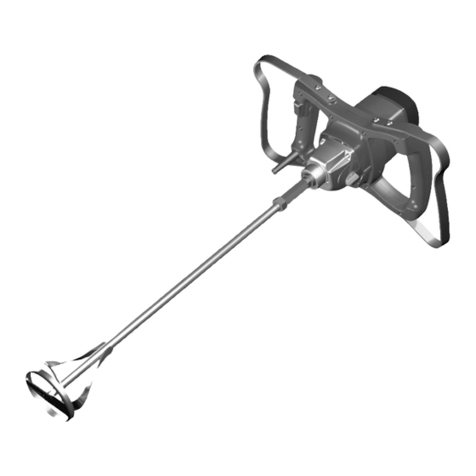
Flex
Flex R 500FR User manual
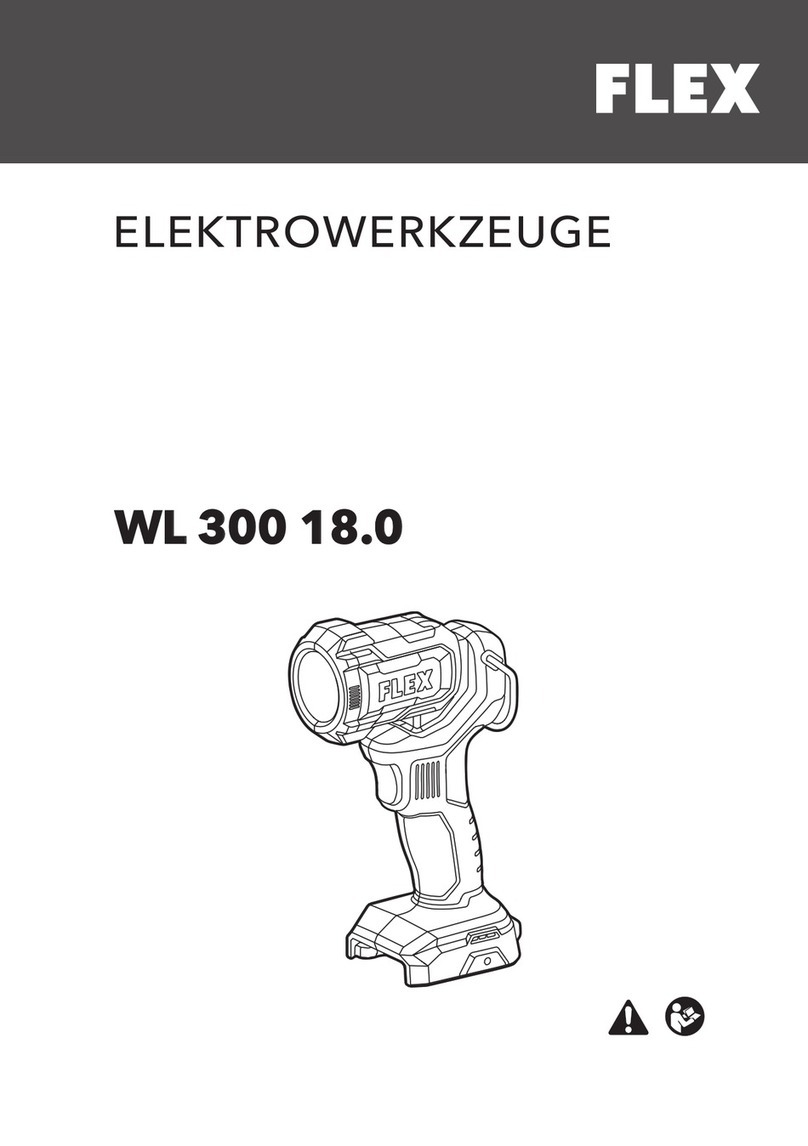
Flex
Flex WL 300 18.0 User manual

Flex
Flex MS 1706 FR User manual
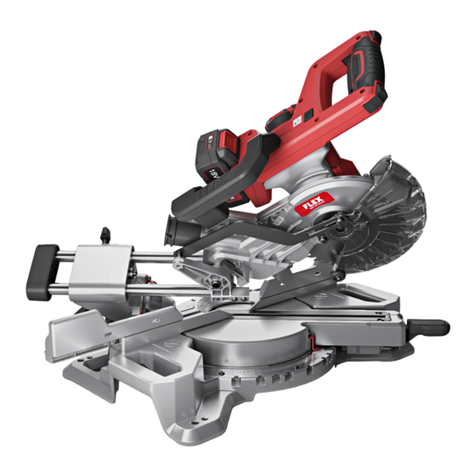
Flex
Flex SMS 190 18.0-EC User manual
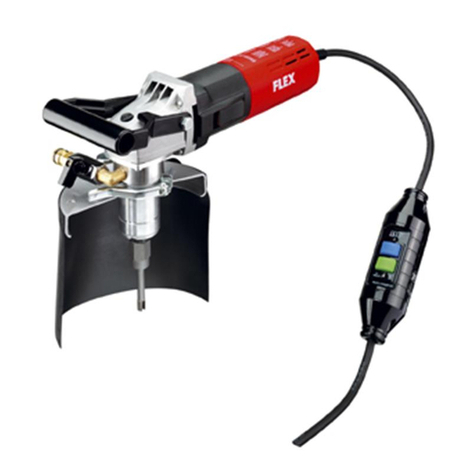
Flex
Flex BHW 1549 VR User manual
